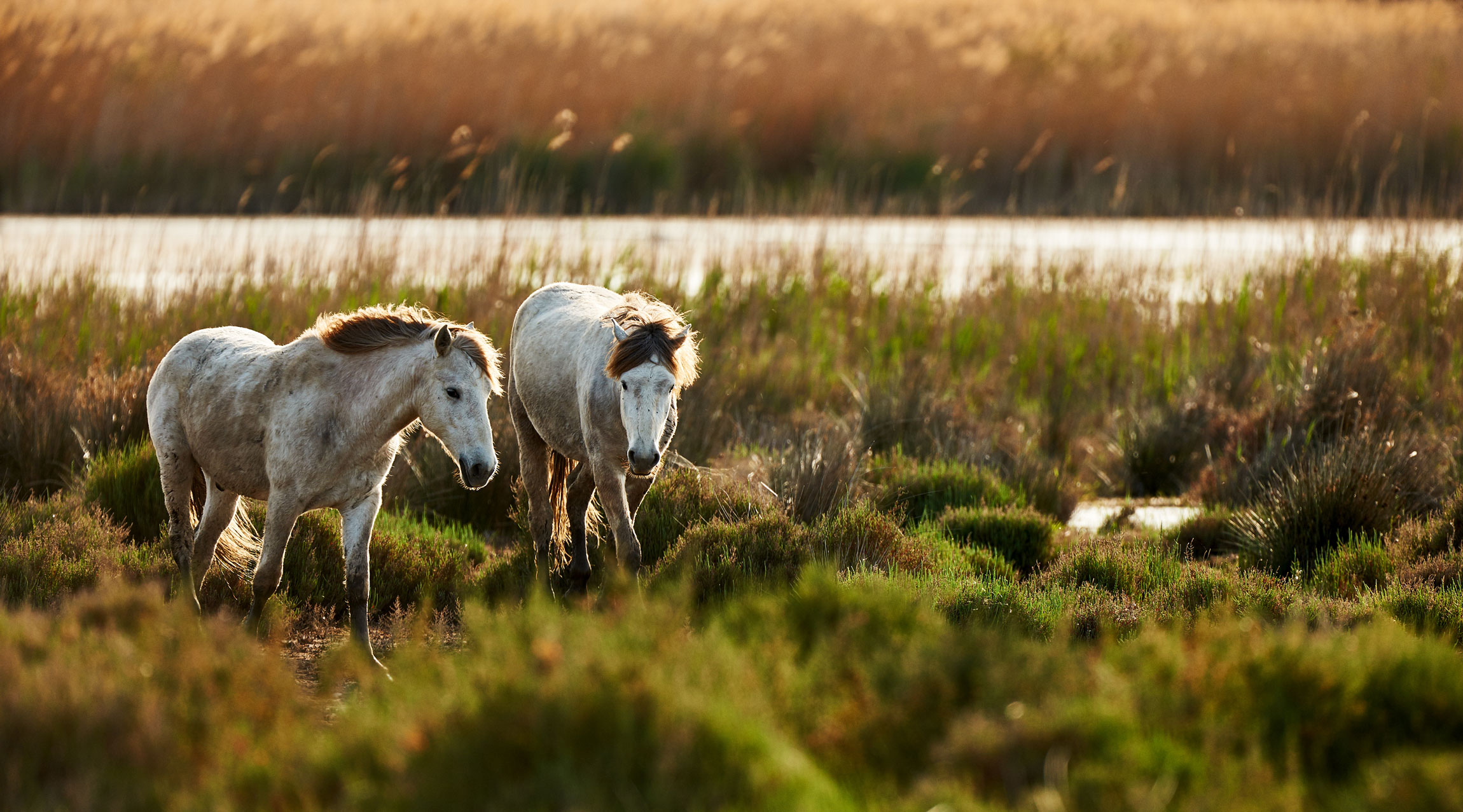This post is a copy of an article from the FEI.org ‘Editors Pick for January’ online magazine. It is written by Patricia Salem.
Patricia Salem(Patricia is a former professional equine massage therapist and recreational rider. )
We take a closer look at this stunning horse…
A trip to Southern France wouldn’t be complete for equestrians without seeing the wild Camargue horses that live in the marshes of the Rhône delta near the Mediterranean Sea.
Here’s a look at this intriguing breed, one of the oldest in the history of equines…

History of the Camargue Horse
Based on archeological evidence, it is believed that the Camargue horse descended from the Stone Age Solutré horse, which was hunted by humans at the time. It probably shares genealogy with Iberian horses, which in turn influenced the major breeds of South America.
The breed has existed in the Camargue region of France for thousands of years and was admired by foreign invaders and French leaders alike, from Julius Caesar to Napoleon.
This horse’s sturdy build, endurance, and ability to subsist on scarce forage made it a symbol of resilience, and it will forever be linked with the people of Camargue who likewise farm the harsh wetlands south of Arles.
Wild herds still exist in the area, and many are protected in the Camargue National Park, which includes a UNESCO designated biosphere reserve. Other Camargue horses thrive in a semi-feral state, where their original lifestyle is still maintained as much as possible, even though they are used for agriculture and raising livestock.

A studbook for Camargue horses was established between 1976 and 1978 by the French government, in an attempt to maintain breed standards in order to preserve the horse’s lineage. Registered foals must be born outdoors and reared by mares in the traditional manner.
In 2003, a category was added for Camargue horses born outside the zone (hors berceau).
Whilst most Camargue horses are still found in their native region, small herds exist elsewhere in France and in the UK, which now has its own stud book. Additionally, the breed was introduced in Italy as the Cavallo del Delta in the Po river delta, and there are now over 150 registered horses there.The Camargue
has a compact
body with a
powerful chest
Camargue Horse Conformation and Appearance
Adult Camargue horses are always a whitish-grey colour, with white hair and black skin beneath. However, foals are born brown or bay and only develop a lighter coat as they age. Some Camargue horses have fleabitten or roan colouring.
This breed is quite short–about 13 or 14 hands tall–but extremely rugged. A compact body with a powerful chest sits above muscular limbs.
A heavy, often square head points to the Camargue’s shared roots with the Barb. The eyes are wide set and bright, and the ears are small and also set far apart.
One aspect of the Camargue’s body that makes it so unique is its feet. The hooves are able to withstand far more moisture than other breeds, and they rarely suffer foot problems or need shoes.
Camargue horses typically stand for hours at a time in water or marshy territory whilst they graze, and their feet have developed to suit their environment perfectly. They’re often compared to the mustangs of the American west, who also evolved to live in an unforgiving habitat.

How Camargue Horses Are Raised and Ridden Today
Present day owners of Camargue horses in France replicate their wild way of living as much as they reasonably can. A semi-feral herd is called a manade, and it is overseen by a gardian, or herder who lives in a culture similar to cowboys of the 19th century.
Camargue horses are used to round up livestock and to herd bulls. They’re also popular for trail riding across the marshes and along the shore, and the breed’s natural fortitude and level-headed disposition make it ideal for Endurance riding too. Some Camargue horses even participate in Dressage and Eventing.
Those interested in observing Camargue horses in France can take rides with local stables out to the marshes to watch them and other fauna, such as the Camargue bulls and flamingos that also congregate in the area.
There are horse photography tours in Les Saintes Maries de la Mer as well, where participants can travel in small groups and get expert advice about capturing the horses with the camera lens.
Seeing a Camargue horse in the wild is truly a once-in-a-lifetime experience that travellers never forget.
It reminds horse enthusiasts of the connection between them and ancient history and gives them a rare glimpse into how many other types of breeds must have lived in centuries past.

Leave a Reply